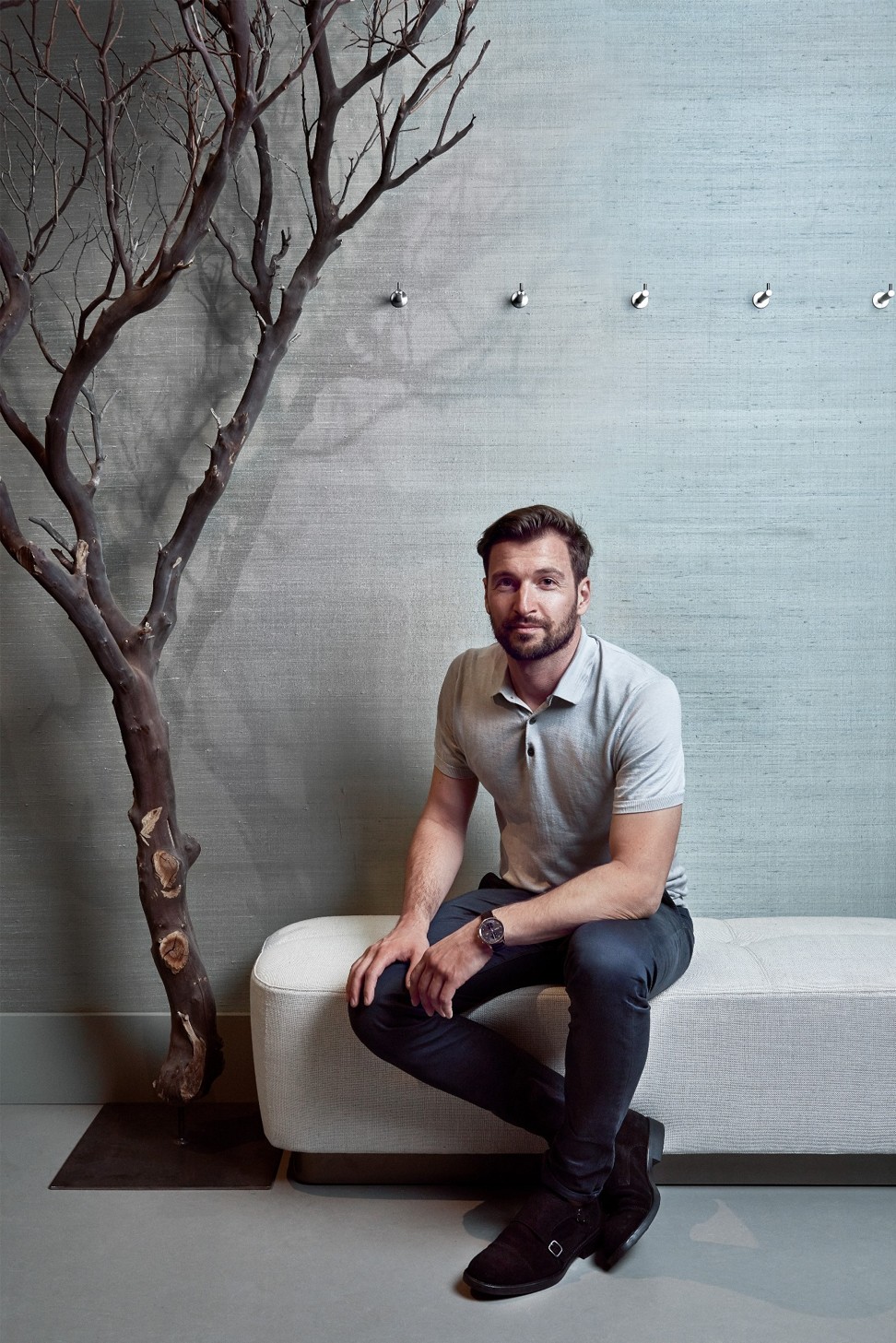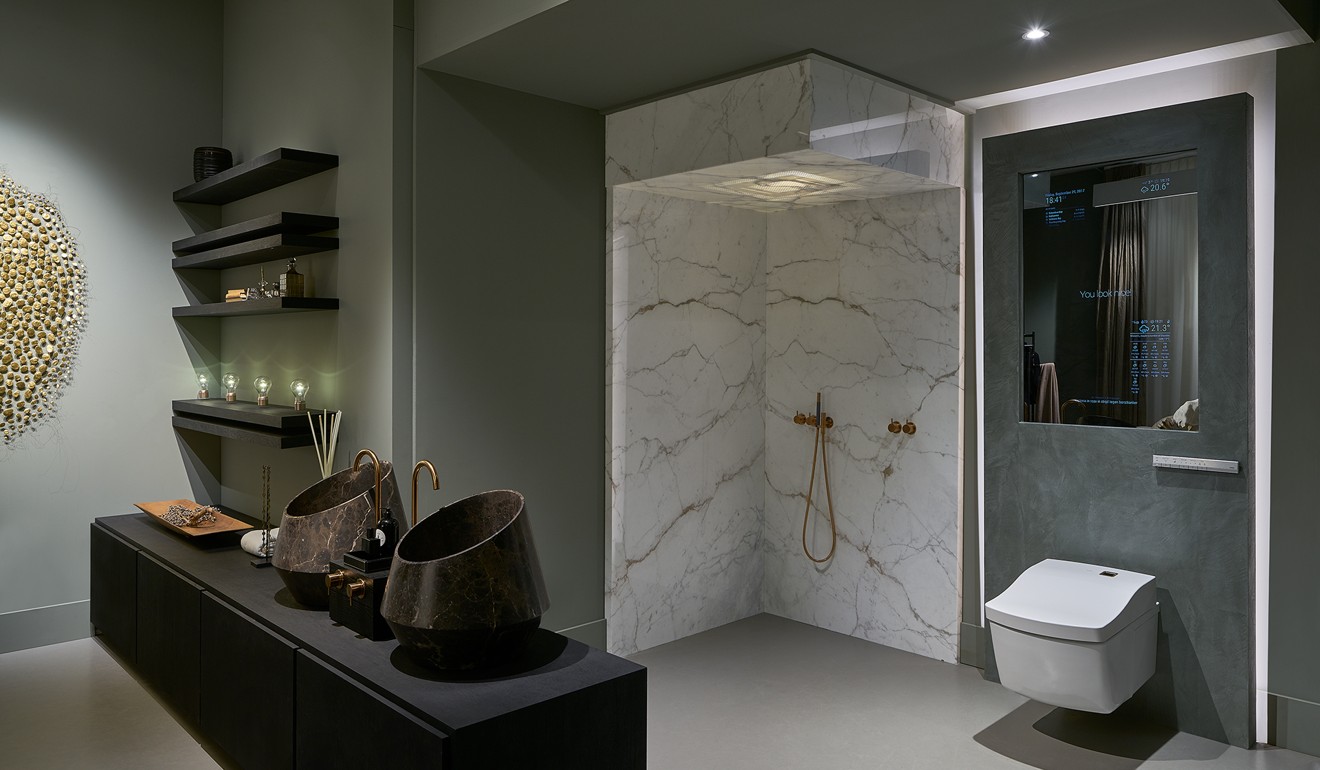
Futuristic flat where hologram butler follows you to bathroom and tells you if you’re not drinking enough
The bed filters the air to help you sleep better, the toilet monitors your health, and TV screens appear by voice command; it may sound like science fiction but the Room of the Future, by Dutch designer Robert Kolenik, is about to become (mostly) real
You might think that the creator of a project called Room of the Future would have filled such a space – either real or imaginary – with a lot of high technology.
Granted, there is a hologram butler – named Emily – in Dutch designer Robert Kolenik’s idea of a future home, but that’s where the gimmicks end. The rest is undoubtedly hi-tech, but also highly functional, in a home he says can deliver “exactly the right cues” to let the occupants feel cool, calm, and blissfully free from electronic stimuli (there’s a noticeable absence of screens).
Need more green in your life? It may be time to bring moss indoors
Design wasn’t an instinctive calling for the Amsterdam-based marketing graduate and part-time model, who joined his father’s home renovation company for something of a career “gap year” in 2004. But five months in, his father died unexpectedly.
“I had to decide whether to look for a job in the marketing field, or continue his company. I chose the latter,” he said.
Kolenik began renovating restaurants and bars, and fixing up houses. After completing a project for an international brewery, the client asked him to design the interior. “Through that I rolled into the interior design field,” he said.

After Kolenik’s second project won an award for the most beautiful cocktail bar in the Netherlands, interior design magazines started publishing his work. “For me, that was recognition that somehow, even without a [design] background, the thing I was doing was appreciated,” he said.
As his company – Kolenik Eco Chic Design – grew, Kolenik came to appreciate a design approach based on intuition, rather than training. “When I look at an interior, I am not limited, having never been told to think in a certain direction,” he says. Watching the company’s first interns work sealed Kolenik’s belief in the advantage of “learning by doing”.
It is becoming increasingly important that our homes should be places where we can find rest. We need spaces that are free of stimuli
Following on from his first book, Kolenik: Eco Chic Design (Lannoo Publishers, 2015), the Room of the Future project explores more of this accidental designer’s “eco-chic essentials”: luxury, warmth, and a philosophy that espouses saving energy, optimising resources, and living moderately. In Room of the Future, he adds technology to the mix, but not in an in-your-face way.
The hologram butler is really just a smart-home controller, obeying voice commands to turn on lighting, air conditioning, music, etc. Fancy seeing a particular film? Just ask, and a screen appears, while the lights adjust to cinema mode.
So far, so Alexa. But Emily gets personal. For instance, she minds your health: after a bathroom visit, she may remind you to drink more water. This she knows, courtesy of the PH reading taken by your toilet. (Such technology is not quite there yet, but brands like Toto are working on it.)

Elsewhere in the Room of the Future is a Tesla Powerwall, a “super” battery aesthetically designed as a white-coated wall hanging that stores solar energy generated on site. According to Kolenik, its 5kW capacity is enough to meet the power needs of an average household, and feed power back into the grid.
Two purifying living green walls, developed by Dutch green innovator Eduard van Vliet, of Green Art Solutions, remove pollutants from the indoor air and filter and recycle the home’s used water. Even sewage, Kolenik claims, can be made fit to drink after passing through the green walls two or three times.
How a Hong Kong couple with clashing tastes created harmony at home
In the bathroom is a rain shower with water, steam or snow effects. Helping to lull the occupants to sleep is a hypoallergenic FreshBed (another Dutch invention). A silent unit inside the bed’s base filters air through a Hepa filter, then delivers it to your body – maintained at your preferred temperature – through an ergonomic mattress. The company claims its FreshBed system can deliver up to a 50 per cent improvement in sleep quality.

Kolenik says: “Because of the huge number of impressions that we take in every day, it is becoming increasingly important that our homes should be places where we can find rest. We need spaces that are free of stimuli. That’s why, in Room of the Future, I demonstrate how your home can strengthen both body and mind.”
His approach is based on the use of natural materials and calming palettes. He also feels a responsibility to the future. All of this has informed his Room of the Future. Shown last year at Salon Residence, a Dutch interior design show, it will be the subject of Kolenik’s second book, and will become reality in an Amsterdam flat that will serve both as his home and a design showcase. Everything except Emily (who may come later) is being included.
Five easy-to-use gadgets to create your dream smart home – from an intelligent front door to light with a choice of 16 million colours
Clients will be able to see how home automation can support, but not intrude on, daily living – something few designers have yet achieved, in Kolenik’s eyes. Four buttons will be enough to manage all functions.
He concedes that the technology his design incorporates will add to the cost of a home fit-out – the green walls, for example, cost €600 (US$735) per square metre – but says that, as with all innovation, the price will come down as time goes on.

